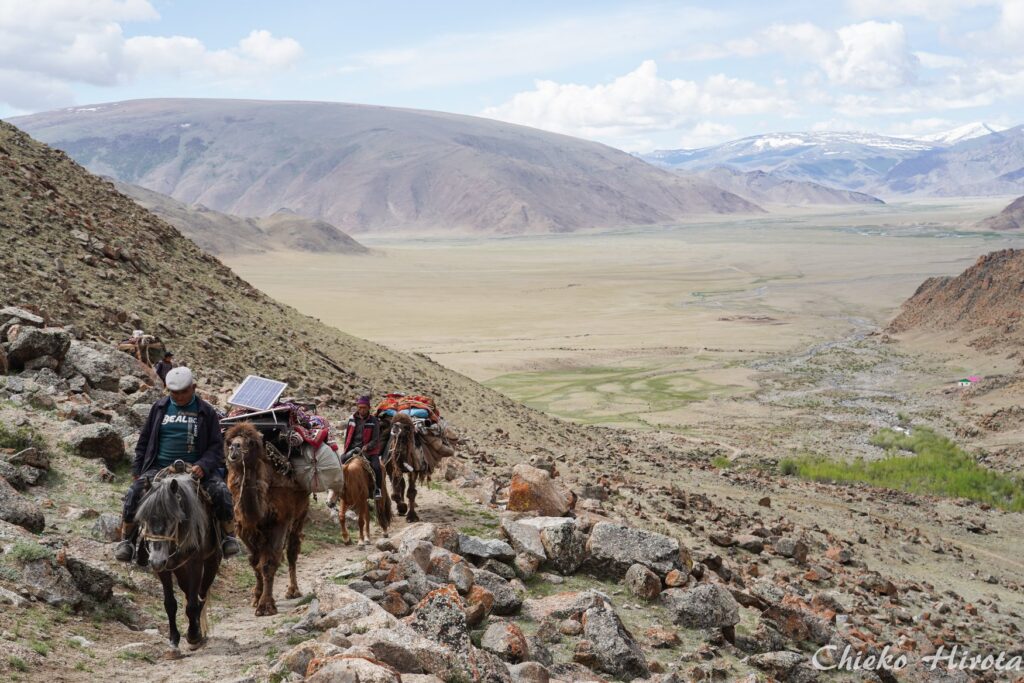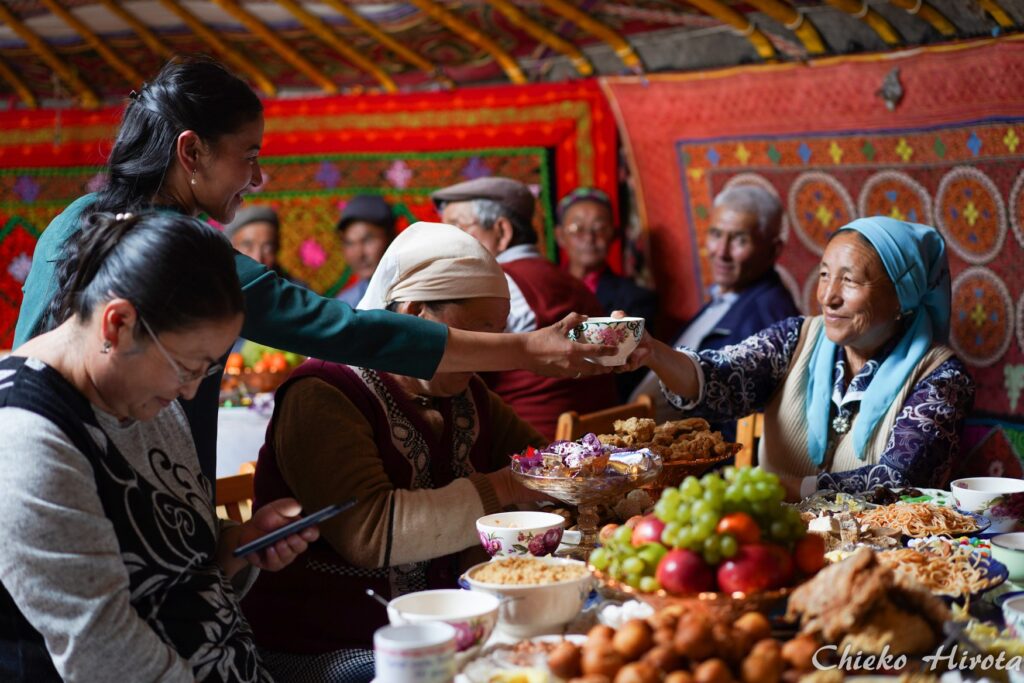Hello everyone, I am Chieko Hirota from the PPIA Japan team. I am a Research Fellow of the Japan Society for the Promotion of Science (JSPS). Since 2011, I have been conducting annual field research on the cultural background of Kazakh people’s behavior in Mongolia (except for the period of Covid-19: 2020-2022). From 2012 to 2014, I have been living with Kazakh people in Bayan-Ulgii Province, learning handicraft techniques from Kazakh women, and documenting their skills in the pastoralism. In this blog, I would like to introduce my research sites and recent research interests.
About the Survey Site
The current Kazakh population in Mongolia is estimated to be approximately 120,000, 80% of which live in Bayan-Ulgii Province, where the survey was conducted. Bayan-Ulgii Province is located in the westernmost part of the country, 1,700 kilometers west of the capital Ulaanbaatar. Bayan-Ulgii Province is located in the Altai Mountains and is characterized by its high altitude compared to other regions in Mongolia.
In this mountainous environment, pastoralism has been the main livelihood in the region. In Kazakhstan, few people engage in seasonal herding anymore, but in Bayan-Ulgii, about 40% of all households in the province are still engaged in herding as their main occupation.
The main livestock kept by Kazakh pastoralists in Mongolia are sheep, goats, cattle, horses, and camels. The number of livestock owned per household is not large compared to other regions in Mongolia, but several households support each other in pastoralism.





(1) 2023/07 Bayan-Ulgii, Sagsai, (2) 2019/06 Bayan-Ulgii, Bulgan, (3) 2018/12 Bayan-Ulgii, Sagsai, (4) 2019/06 Bayan-Ulgii, Bulgan, (5) 2012/05 Bayan-Ulgii, Sagsai
Fascinated by the beautiful interior of the Kazakh yurt
Yurts (Tent dwellings) are indispensable for the seasonal migration of herdsmen. Yurts are called Kiiz-ui in Kazakh. At first glance, Kazakh Kiiz-ui look similar to the Mongolian yurt, Esgii ger, but the shape of the bars connecting the skylight to the wall are slightly different, and the Kazakh ui is slightly larger than the Mongolian ger.


(1) 2012/06 Bayan-Ulgii, Altai Kazakh ui, (2) 2017/06 Bayan-Ulgii, Buynt Kazakh ui
Once you step inside a Kazakh ui, you will be surprised by the amount of decoration. The decorations inside these yurts are mainly done by women. Women use animal hair, plants, cloth, and thread as the main materials to make rugs, wall hangings, and belts, using embroidery and weaving techniques.



(1) 2017/06 Bayan-Ulgii,Bulgan Kazakh ui, (2) 2018/09 Bayan-Ulgii, Bulgan Embroidery by hook, (3) 2018/09 Bayan-Ulgii, Bulgan Yarn Spinning
Kazakh women in Mongolia were active in manufacturing mainly from the 1960s to the 2000s. Now that industrial products are easily available in the market, the number of people who make things with their own hands has decreased. However, many interior decorations made by the mother of the family are still used in people’s daily lives to decorate their homes. When asked about the history of the decorations, each family remembers the reasons for their creation with surprising clarity. For example, the reason could be the marriage of a child, the birth of a child, the migration of a sibling to Kazakhstan, and so on. The decorations are the family’s memory and record of their lives.




(1) 2018/08 Bayan-Ulgii, Altantsogtsu, (2) 2017/06 Bayan-Ulgii, Bulgan, (3) 2017/06 Bayan-Ulgii, Bulgan, (4) 2017/06 Bayan-Ulgii, Bulgan
Entertaining Others in Kazakh ui
There are various reasons behind the Kazakhs’ enthusiasm for decorating the interiors of their yurts. One reason is that Kazakh yurts are public spaces that are visible to others.
Kazakhs frequently have guests in their homes. Kazakhs like to entertain, and they hold feasts in conjunction with weddings and funerals. This custom of feasting has been reported in anthropological studies, mainly in Kazakhstan.
In the case of the Kazakhs in Mongolia, since the 2000s, they have been actively holding feasts under the influence of Kazakhstan. Although these feasts have caused economic hardship to the people, they have still been used to communicate with each other through feasts.

2019/06 Bayan-Ulgii, Bulgan
However, the Covid-19 pandemic that began in 2020 forbade Kazakhs from holding feasts. What changes in the Kazakh feasting culture can be seen as a result of this situation? I am currently researching what the Kazakhs thought and did when they were forbidden to feast. I would like to share with you, through workshops and papers, how Kazakh people have lived through the pandemic and how it will affect Kazakh culture in the future.

No responses yet